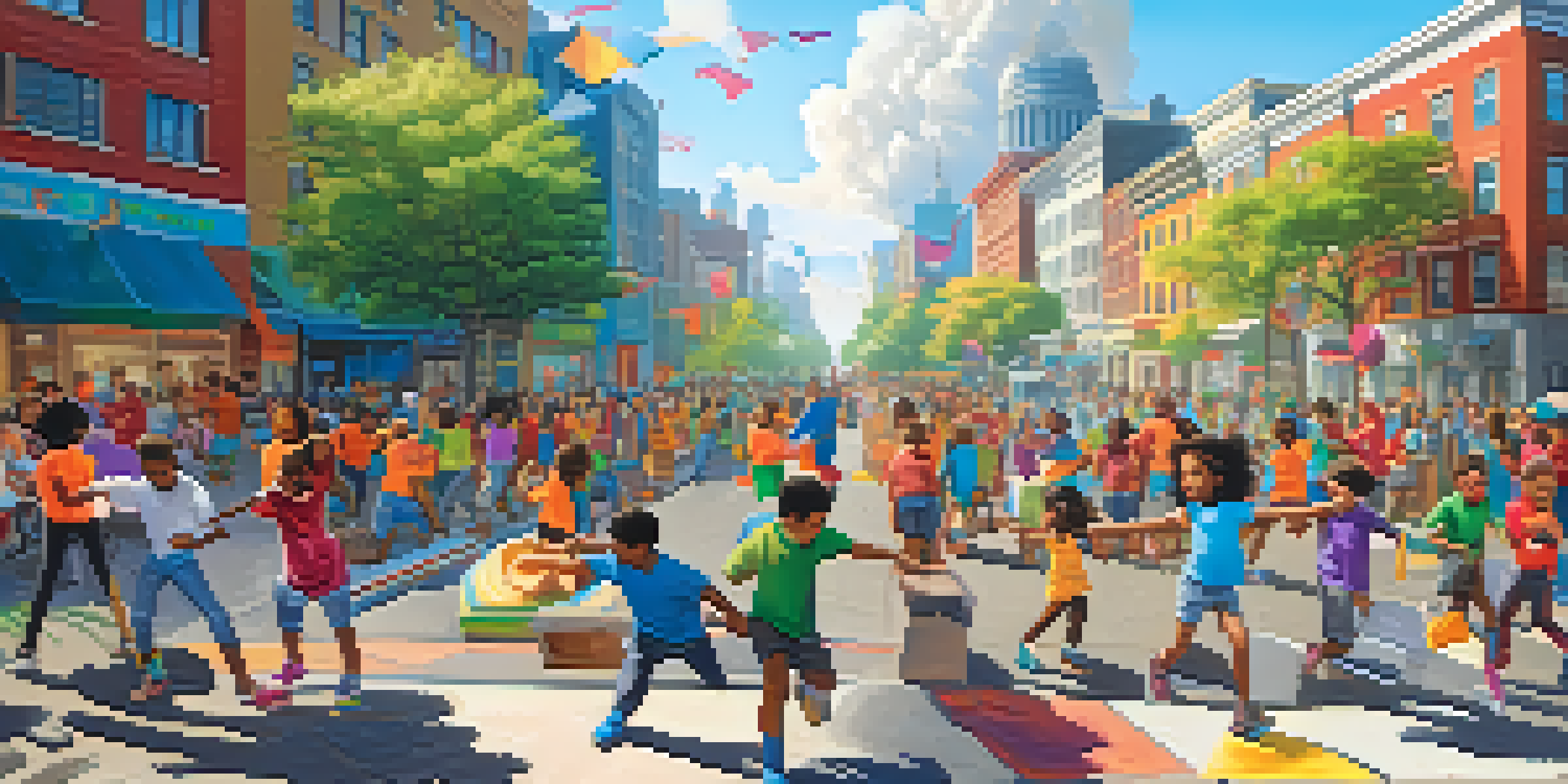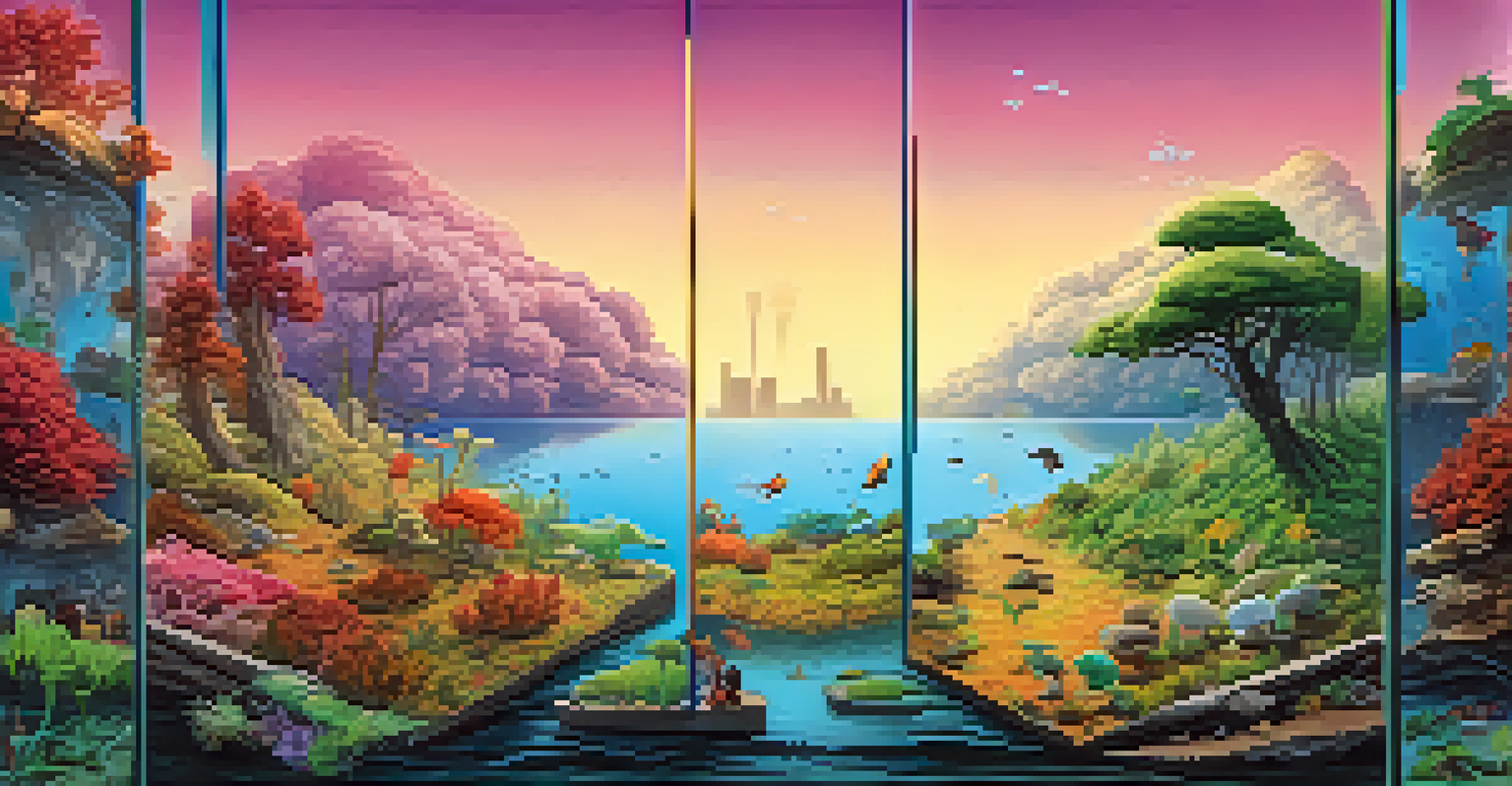The Role of Animation in Highlighting Social Injustice

Understanding Animation as a Medium for Change
Animation has a unique ability to convey complex ideas in a digestible way. Unlike traditional media, animated stories can simplify heavy topics, making them accessible to a broader audience. This quality is particularly valuable when addressing social injustices that might otherwise be too abstract or difficult to discuss.
Animation can explain whatever the mind of man can conceive.
By using vibrant visuals and engaging storytelling, animation captures attention and evokes emotions. It often allows for a more imaginative exploration of serious issues, thereby creating a connection with viewers that live-action might not achieve. This emotional resonance can motivate audiences to reflect on and even become advocates for change.
Think of animated films like 'Zootopia' or 'WALL-E,' which tackle themes of prejudice and environmental degradation, respectively. Through their colorful characters and engaging plots, these movies raise awareness about significant societal issues, proving that animation can be a powerful tool for social commentary.
Historical Context: Animation and Social Issues
Historically, animation has been used to highlight social issues, dating back to World War II. Films like Disney's 'Der Fuehrer's Face' used satire to critique the Nazi regime and promote patriotism among Americans. This shows that animation can serve as both a form of entertainment and a vehicle for political commentary.

In the decades that followed, various animators continued to explore social injustices, with works addressing racism, poverty, and inequality. Shows like 'The Boondocks' and 'South Park' have used humor and satire to confront uncomfortable truths, often sparking conversations about race and privilege in society.
Animation Simplifies Complex Issues
Animation effectively presents heavy topics, making social injustices more accessible to a wider audience.
These examples illustrate how animation has evolved as a medium to challenge the status quo. By weaving social critiques into their narratives, animators have historically pushed the boundaries of what audiences are willing to discuss.
The Power of Visual Storytelling in Animation
Visual storytelling in animation allows creators to present social issues in a way that resonates deeply with viewers. The use of color, character design, and movement can evoke specific emotions, enhancing the audience's understanding of the issue at hand. This artistic freedom enables creators to portray narratives that might be too sensitive or controversial for live-action.
The power of storytelling is exactly this: to bridge the gaps where everything else has fallen short.
For instance, the animated short 'Dear Basketball' beautifully illustrates the passion and struggles of its protagonist through expressive visuals. In doing so, it transcends the individual story and touches on broader themes of ambition and sacrifice, which can be tied to social injustices faced by many.
By employing metaphorical visuals, animators can encapsulate complex social issues succinctly. This approach encourages viewers to engage with the content more personally, ultimately fostering empathy and understanding.
Animation's Role in Education and Advocacy
Educational animations have become a crucial tool in raising awareness about social injustices. Organizations often create animated videos to explain complex issues like climate change, systemic racism, or gender inequality. These animations can break down barriers to understanding, making it easier for audiences to grasp the nuances of these topics.
For example, animated campaigns by groups like 'The Human Rights Campaign' effectively communicate messages about equality and justice. By using animation, these organizations can reach diverse demographics, including younger audiences who may not engage with traditional media.
Emotional Engagement Drives Change
The emotional resonance of animated narratives fosters empathy, motivating viewers to reflect on social issues.
Through educational animation, viewers not only learn about social injustices but are also inspired to take action. This blend of information and motivation is a powerful combination that can lead to real-world change.
Case Studies: Successful Animated Works Addressing Injustice
Several animated works have successfully highlighted social injustices, sparking conversations and inspiring change. One notable example is the animated documentary 'Flee,' which shares the harrowing story of a refugee's journey. By blending animation with real-life narratives, it offers a fresh perspective on the refugee crisis that resonates with viewers.
Another example is the series 'Avatar: The Last Airbender,' which, while primarily a fantasy adventure, tackles themes of colonization and oppression. The show's nuanced storytelling invites discussions about real-life social issues, making it a beloved classic that continues to impact audiences.
These case studies underscore the potential of animation to address social injustices effectively. They demonstrate that animated storytelling can not only entertain but also educate and inspire action.
The Emotional Impact of Animated Narratives
Animation has a unique emotional pull that can amplify the gravity of social issues. The combination of visual artistry and sound can create a deeply immersive experience, drawing viewers into the emotional core of a story. This heightened emotional engagement allows audiences to connect with characters and their struggles more profoundly.
Consider the short film 'Paperman,' which uses minimal dialogue yet conveys a poignant love story through its animation. The emotional depth of the narrative resonates with viewers, reminding them of their own experiences and emotions, which can extend to issues of social injustice.
Innovative Future for Advocacy
Advancements in technology, like VR and AR, are expanding animation's role in addressing social injustices.
When audiences feel a connection to animated characters, they are more likely to empathize with the broader social issues represented. This emotional investment can be a catalyst for change, motivating individuals to reflect on their own beliefs and actions.
The Future of Animation in Social Justice Advocacy
As technology advances, the potential for animation to address social injustice issues continues to grow. Emerging platforms and tools enable creators to reach wider audiences, making animated stories more accessible than ever. This democratization of animation could lead to an influx of diverse voices tackling pressing social issues.
Virtual reality (VR) and augmented reality (AR) are also beginning to play a role in animated storytelling. These technologies offer immersive experiences that can transport viewers into the heart of social issues, creating a unique opportunity for empathy and understanding.

The future of animation in social justice advocacy looks promising, with the potential for innovative storytelling methods to emerge. As more creators harness the power of animation to highlight social injustices, we can expect to see a continued rise in awareness and advocacy.